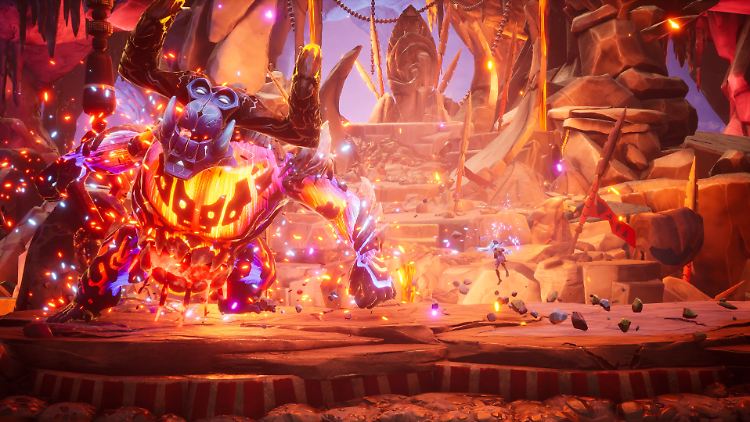Video games are usually meant to entertain. When developers want to get gamers to think about deeper issues, they have to perform a difficult balancing act: “Tales of Kenzera: Zau” tries to do just that. ntv.de tested whether the plan works.
An adventure of a different kind: With “Tales of Kenzera: Zau”, Surgent Studios is bringing a video game to consoles and PC that mixes African mythology with tricky obstacle courses and at the same time wants to teach the player something about coping with grief. The combination is ambitious, but works thanks to a good narrative structure and challenging gameplay. ntv.de tested the game.
In “Tales of Kenzera” players take on the role of Zau. He is grieving the death of his father. Unable to overcome the pain, he turns to Kalunga, the god of death, and offers him a deal: if Zau succeeds in bringing the three great spirits to the land of the dead, then Kalunga will bring Zau's father back to life. The god of death agrees. Zau relies on two of his shaman skills and the sun and moon masks, which give him different abilities to overcome the dangers of the surrounding lands.
The title published by Electronic Arts falls into the category of Metroidvania games. The word combination is derived from Metroid and Castlevania, two iconic video games in which you explore a large, complex but interconnected world without a clear goal. Many of the platform passages in “Tales of Kenzera” are in 2D, as is typical for the genre, while animated story cutscenes are in 3D. In this case, however, the developers have opted for a light version. The world is not too complex and Zau has mastered many movement elements right from the start of the game, and some can be used variably.
For example, Zau can use the moon mask to temporarily freeze bodies of water and turn waterfalls into walls in order to reach higher areas. The ability can also be used to temporarily freeze enemies. A grappling hook, an energy-charged spear and other mechanics can be unlocked over the course of the game.
Actor becomes game developer


In four acts, Zau fights his way through different biomes.
(Photo: EA)
What works wonderfully in the game is the atmosphere: a carefully constructed story and very good dubbing, atmospheric music, paired with the African Bantu mythology and a bit of Afro-futurism like in Marvel's Wakanda universe. Bright, colorful colors in desert, jungle or swamp landscapes contrast with the sometimes sad plot.
The fact that the story is so gripping is also due to the founder of the development studio, actor Abubakar Salim (“House of the Dragon”), who processes his personal experiences of grief in the game. “We lose a parent, friends, family members, but also pets or even a job. In a strange way, this connects us all. I want to show that we as people are not alone in this whole process that we call life,” he said in an interview with the Redaktionsnetzwerk Deutschland.
The mask(s)


Boss fights are tough.
Another thing that works really well in the game is the combat system. The enemy types require the player to quickly switch between the moon and sun masks. This is partly because flying enemies have to be eliminated primarily by long-range combat, but also because of protective shields that can only be broken with the respective mask. A talent tree allows you to learn additional attack combinations that provide more variety. Zau is powerful with the masks, but his enemies are numerous. Agility usually beats pure strength in the game. You rarely get the feeling that bad luck is to blame when you experience virtual death.
The boss fights are particularly challenging: Here the player has to use newly learned skills and memorize the attack patterns of the colossi, some of which fill the screen. The level of difficulty is significantly lower than other Metroidvania titles, but the potential for frustration is also lower. This maintains the flow of the game, which the story-driven “Tales of Kenzera” also needs.
If there is one criticism, it is that the game does not have a particularly high replay value. Once you have completed the game, the story has been told and the biggest puzzles and artifacts in the game have been collected. At a price of 20 euros, the several hours of fun are still a fair deal that ultimately conveys a good message.


